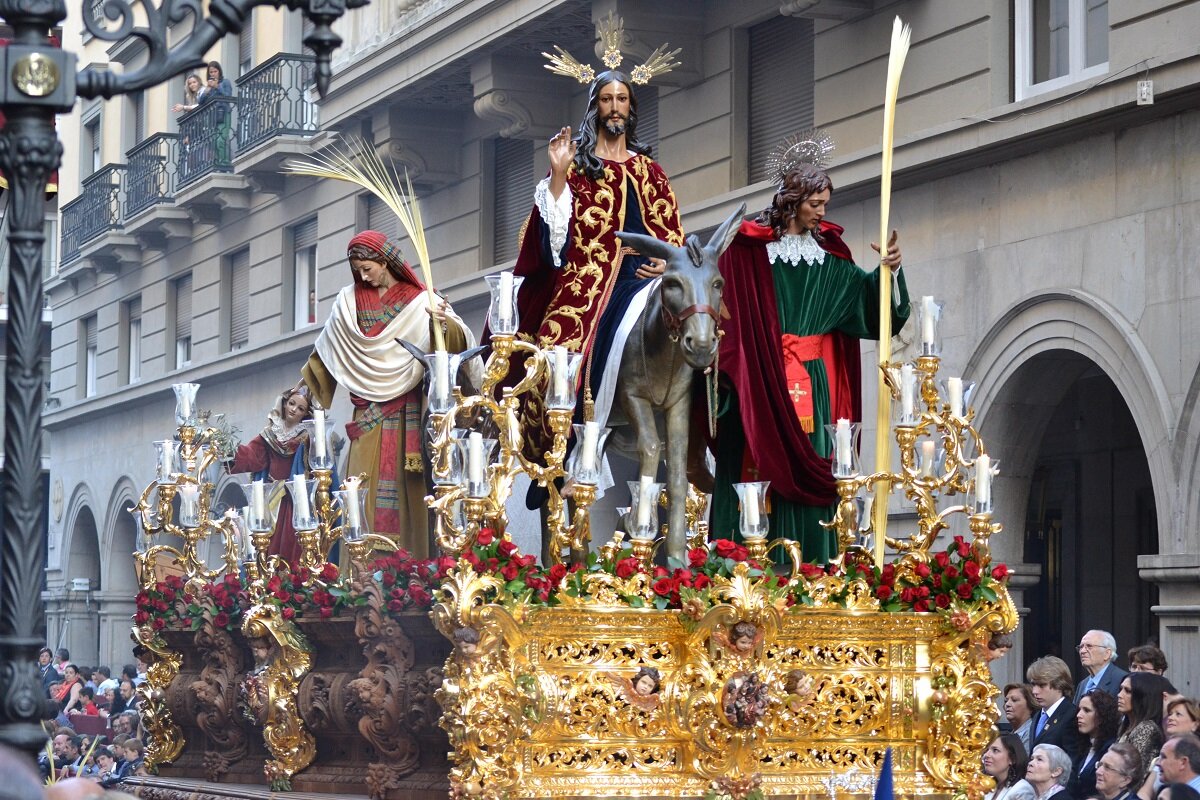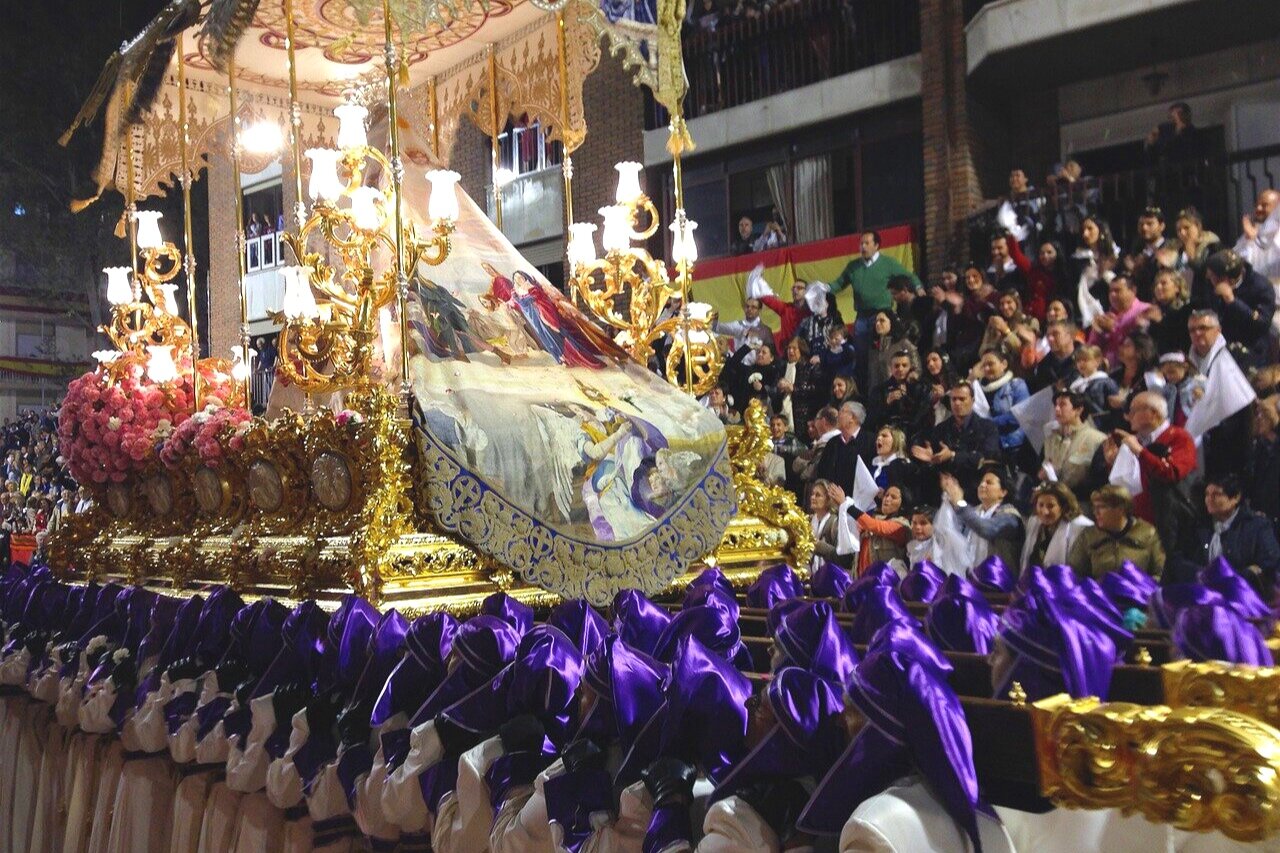Spain’s Semana Santa
Jorge Roman | Traveling with Jorge
Among the many celebrations you can find in Spain, the top of the list for me is Semana Santa, or Holy Week. Yes, a full week. Easter represents for us the entire week, from Palm Sunday until Resurrection Sunday.
A float (or throne) representing Jesus Christ entering the city of Jerusalem on Palm Sunday. (Granada)
Image | Enrique Laguna
Allow me to remind you that among Christians, there are three main “branches”: Catholic, Protestant and Orthodox. All of them have many traditions and celebrations, although in Spain, the most “eye-catching” seems to be the Catholic ones, due to the parades celebrated with images venerated by faithful congregations or cofradías.
Beyond Spain, you’ll also find them throughout the Mediterranean region and certainly in Central and South American countries. Centuries of shifting political borders, the trading of commerce and ideas, and even colonialism have contributed to the similarity in cultural traditions.
In Spain, Easter traditions come from medieval times and have changed in some ways over time. Back then, the Christian community would congregate to pay tribute to the Passion of Jesus Christ. Parishes in different neighborhoods led by the local priest promoted devotion to images representing the saints. Statues of patron saints were often crafted by well-known artists as a donation to the church or commissioned by cofradías (religious brotherhoods) who had raised funds to pay for the religious art.
As time went by, traditions and legends rose among the population. Artisans adopted a specific saint that had something to do with their job or physical condition.
For example, the legend of Saint Christopher says he helped Baby Jesus to cross a river on his shoulders. Upon reaching the other shore, he was carrying a bigger body with a globe in his hands representing the world. He helped carry the weight of the world through a difficult path, and it was considered a miracle. His constant miracles inspired more than 8,000 people to convert to Christianity and astonished the local authorities who eventually condemned him to several martyrdoms. He is now (unofficially) considered the patron saint of travelers.
Saint Lucia was condemned to be martyred after converting thouthands of people into Christianity “bringing the light to their lives”. “Lucia” means “light, or “person who brings the light”. Today, people turn to her as the patron saint of the blind.
The statues made to venerate these saints offered security and protection to devotees who felt comfort praying to them, especially when in the midst of big droughts, pandemics, wars, natural disasters, and other times of trouble.
Over the centuries, new traditions and elaborations have evolved the commemoration and celebration of not just Easter but the entire Holy Week. During the Middle Ages, communities might have gathered in a single space to venerate the statue representations together. By the mid-19th century, these celebrations were purely local, with each cofradía putting their own signature on how the event took place. There was no official mandate from the Pope, the bishop, the diocese, or the parish about what could or could not be done. It was the head of each cofradría who made the rules, always respecting local authorities and traditions.
From the 1940s, these brotherhoods grew, in part because of Franco’s enforcement of the only and obligatory religion. As in the Middle Ages, in bad times people found spiritual comfort in praying and binding together as a community. As the cofradrías grew, so did the traditions.
These days, the public journeys through the streets with dedicated volunteers hoisting the weight of ornate floats on their shoulders, carrying the religious figures through crowds of the faithful followers to their local parish. Those who want their sins forgiven must pay respect to their saints of devotion, parading behind the floats on their respective days of the week, depending on the cofradía they belonged to.
A Semana Santa throne featuring Holy Mary
Image | Iwona Olczyk, Pixabay
One cannot join a cofradía easily. In the most venerated and famous ones, a person’s position in the organization as a penitent or board member is often a family inheritance and has to be stated into a legal testament. Still, anyone can apply, but they must provide “proof” of devotion. With time, patience, and maybe divine intervention, admission might be granted.
On parade day, the face and head must be covered. Some use just a cape covering the full head, but most use the white conical hood (capirote) in addition to the big body cape and gloves. This way, they parade as anonymous penitents and are not recognizable to anybody—this serves as a simple, visual reminder that we are all seen equally in the eyes of God and should humble ourselves before him.
Penitents clad in capirotes (conical hoods) participate in Holy Week celebrations in Cádiz, Spain.
Image | Vidar-Nordi Mathisen, Unsplash
But this tradition was actually adapted from the Spanish Inquisition and reclaimed as a symbol of one’s penitence. At the peak of the trials, “penitents” (Jews, Muslims, or non-Catholics) were punished by being made to wear the hat on the way from the trial to jail, showing in public that they were “offenders” to the only religion allowed.
Through plague, the Inquisition, wars, and a dictatorship, this Semana Santa traditions have persisted. Many sociologists still wonder why Spanish “Holy Week” is one of the most venerated, rooted in traditions, and celebrated in the whole world. Some theorize that Easter is printed deeply into cultural traditions and into the identity of the population.
That said, Holy Week is not celebrated the same all over Spain. In the north, celebrations are almost nonexistent. The weather conditions have a big influence. Maybe the odd congregation at one specific place might parade on Easter Friday. Also, some northern cities have their parades classified as “National Cultural Interest,” expressing devotion in a totally different way, showing more austereness.
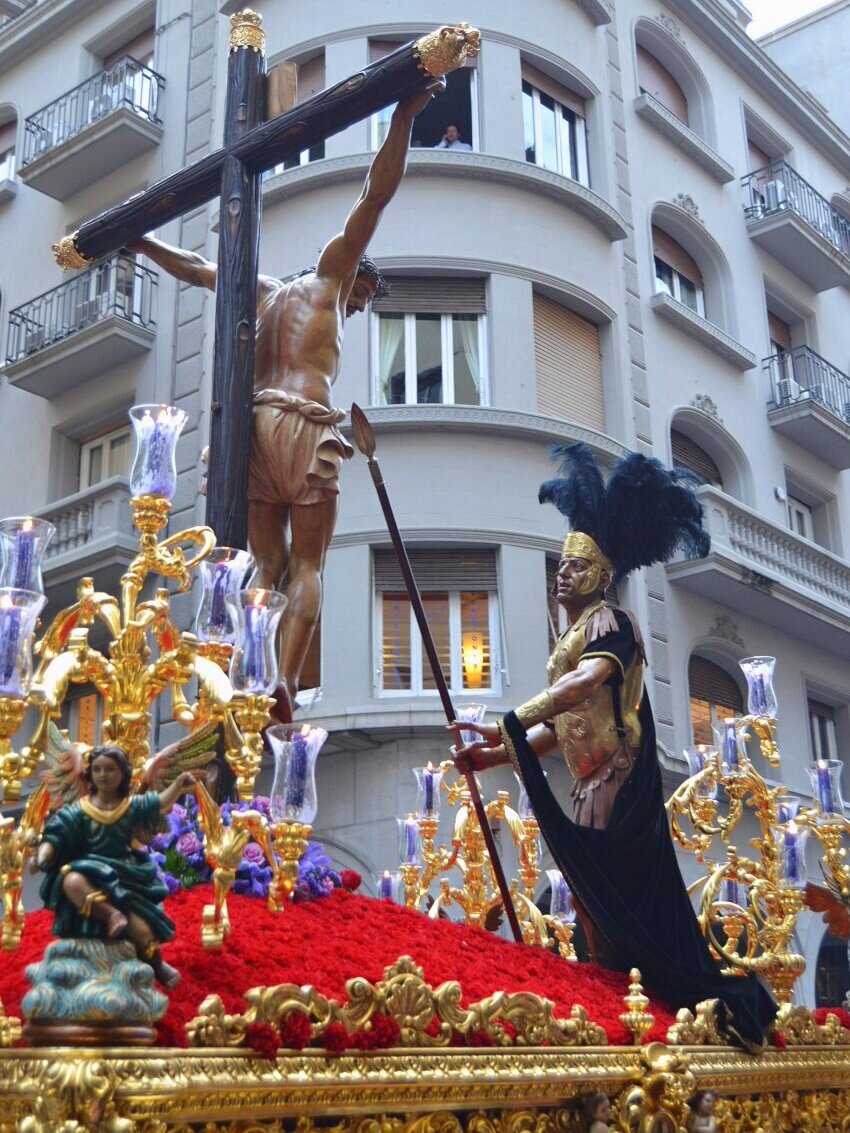
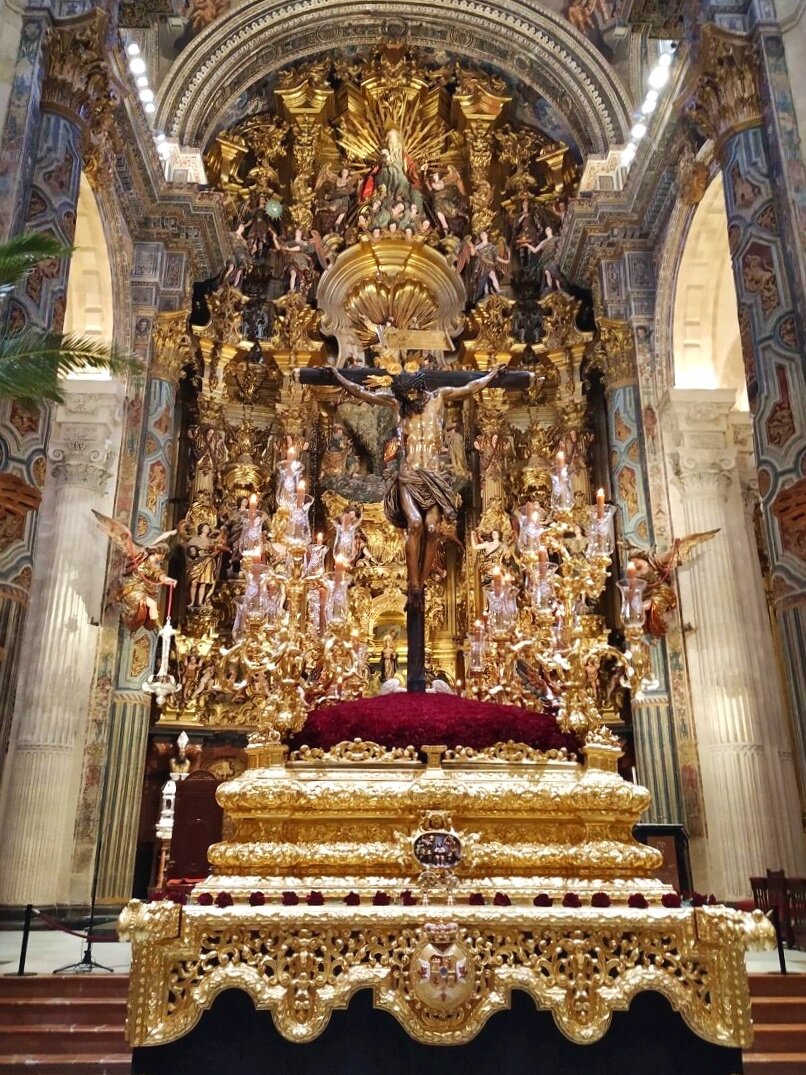
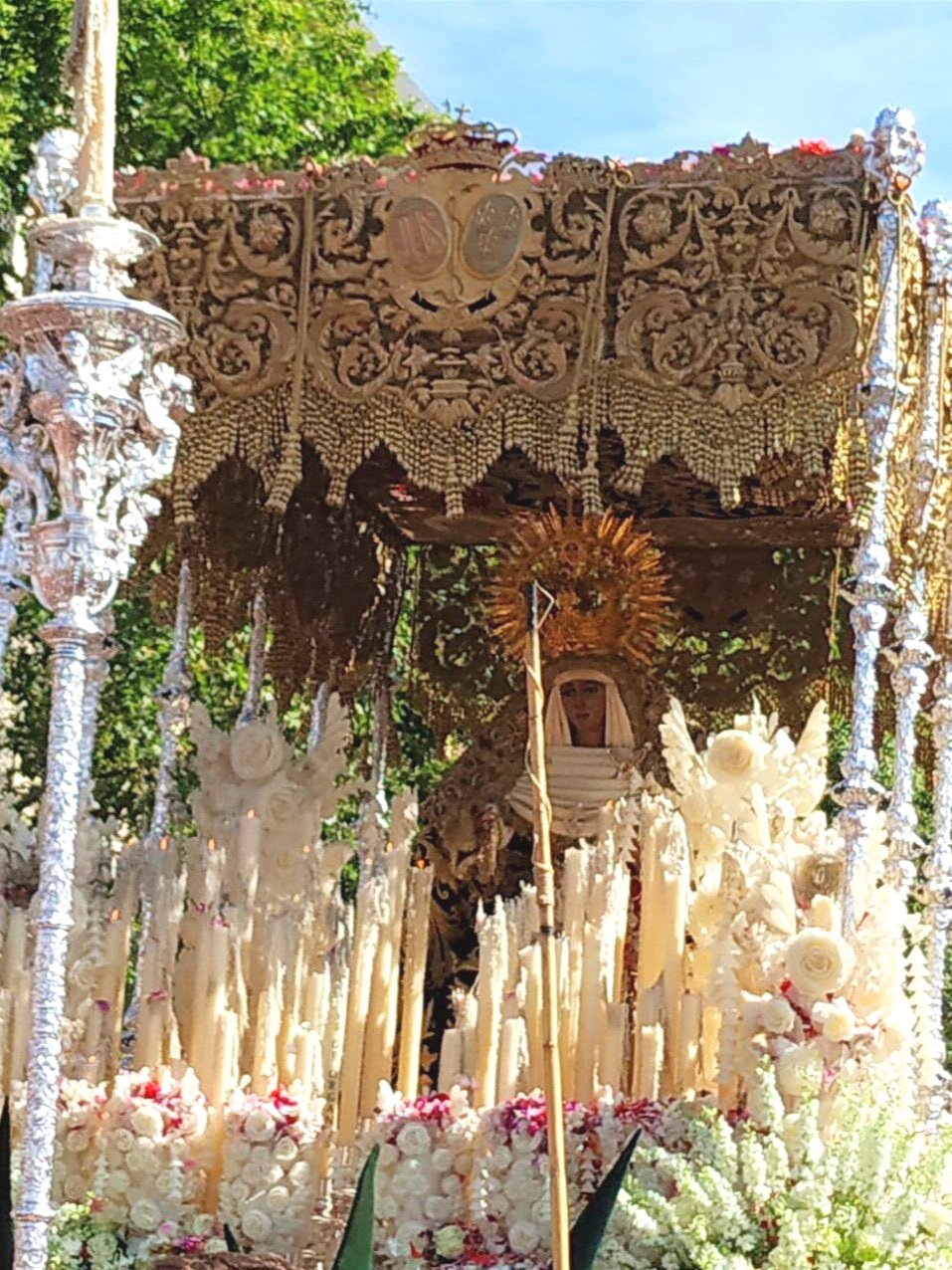
The people’s passion and devotion from southern Spain might look crazy if you never experienced it, but it is one of the most impressive expressions of faith and love that you can witness. In any of the cities in Andalucía, the attitude towards this act is incomparable to any other region. It is the unique combination of faith, fidelity, the Mediterranean attitude, devotion, fervor, and tradition that make the Andalusian celebrations of Palm Sunday to Resurrection Sunday so exciting and beautiful, even for non-believers.
In my late teens, I experienced the honor of carrying a throne during Semana Santa. There were 250 guys lifting a throne weighing 2.5 tons, parading through central Málaga, my hometown. The experience was unique and I have very fond memories.
It takes dozens and dozens of people to bear the weight of this elegant Semana Santa throne in Lorca, Spain.
Image | jackmac34, Pixabay
As an adult and because of my work as a tour guide, I’ve had the fortune of witnessing Holy Week celebrations in other cities, and the emotions it stirred in me gives me goosebumps. It’s a form of Stendhal Syndrome—a kind of ecstasy when you are surrounded by beauty and good emotions. If you ever experience any of those parades and find yourself feeling tears rolling down your cheeks, do not panic. Simply enjoy the moment. Give yourself over to the pageantry, piety, and passion of Semana Santa, and allow yourself to be a part of the culture and tradition of a centuries-old celebration.

